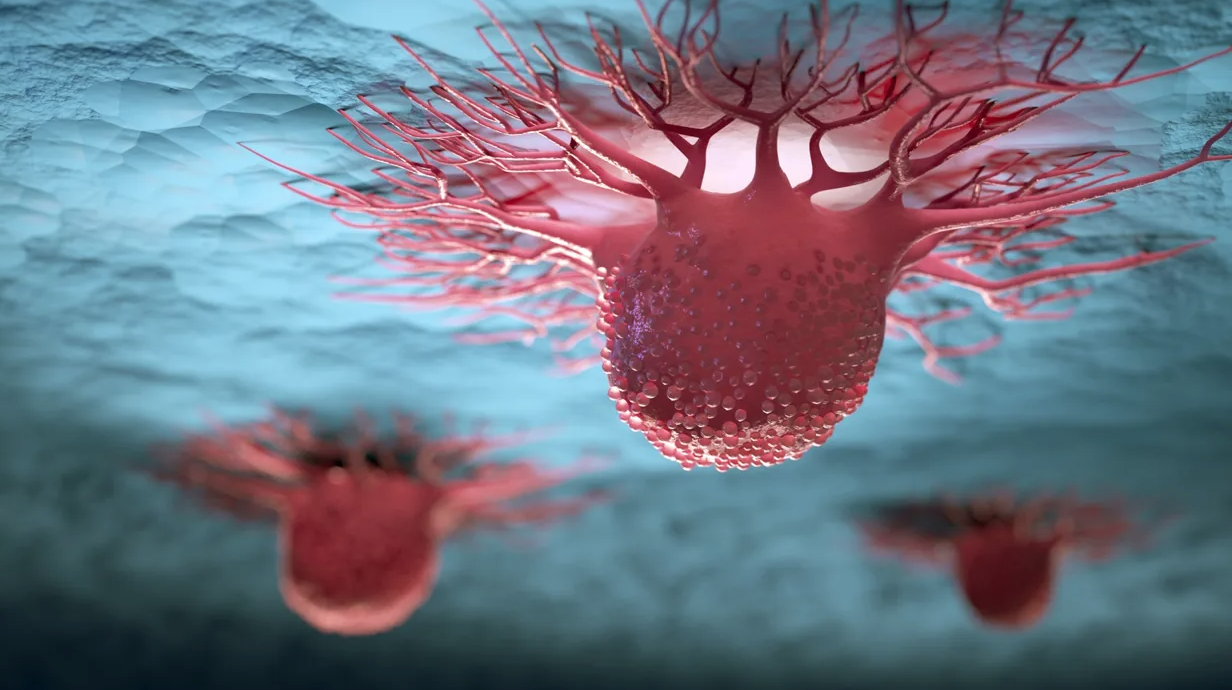Finding a cure for cancer is probably one of the biggest goals for scientists. It seems that another critical step has been taken on this path. Scientists have found a way to make cancerous tumors vulnerable to drug treatment by blasting the gates to their heart. The strategy is based on planting a remote-controlled bomb in the cells lining the tumor’s associated blood vessels.
These vessels control access to tumor tissue. If access is not open, immune cells that would fight the cancer cannot easily access the tumor tissue.
The timer bomb on the cells is actually a “death receptor” called Fas or CD95. And this receptor, when activated by the right antibody, triggers the cell’s programmed death.
With Fas, the bomb binds to CAR-T cells.
Scientists from the University of California, Davis (UCD) and Indiana University argue that until recently CD95 has been “undervalued in cancer immunotherapy”. To date, no single Fas antibody has reached the clinical trial stage.
In recent experiments using mouse models and human cell lines, scientists at UCD have finally identified specific antibodies that effectively trigger self-detonation when they bind to Fas receptors. Immunologist Jogender Tushir-Singh, senior author of the study, said: “Previous efforts to target this receptor have failed. But now that we have identified this epitope, there may be a therapeutic pathway to target Fas in tumors,” says immunologist Jogender Tushir-Singh, the study’s lead author.

The antibody that binds to this epitope – a specific part of the death receptor – essentially represents the cell’s kill switch. Once this immune checkpoint is opened, other cancer treatments, such as CAR-T therapy, can gain access to more targets that are often clumped together and hidden within the tumor.
CAR-T therapy works by programming a person’s own white blood cells, called T cells, to bind to and attack specific types of cancerous cells. But these adapted immune cells cannot get past “bystander” or “observer” cells, which often lack the recognizable antigens used to target tumor cells.
However, CAR-T therapy is only approved to treat blood cancers or leukemia. Unfortunately, it cannot achieve consistent success against “solid tumors”. “These are often also called ‘cold tumors’ because immune cells cannot penetrate the microenvironment to provide a therapeutic effect,” explains Tushir-Singh:
It doesn’t matter how well we design the immune receptor-activating antibodies and T cells if they cannot get close to the tumor cells. Therefore, we need to create gaps for T cells to infiltrate.
In recent experiments at UCD, scientists have developed two engineered antibodies that are “highly effective” at binding to Fas receptors and causing surrounding cells to self-explode. This worked in ovarian cancer models and many other tumor cell lines tested in the lab.
It could become a drug in the future
The Fas ligand developed by the researchers was able to bind to two critical parts of the Fas receptor, which the researchers say should be investigated more intensively. These parts have the potential to be developed into drugs in the future.
If CAR-T cells can one day be engineered to target parts of these receptors on surrounding cells, the therapy could be much more effective against tumors. Tushir-Singh explains:
“Before we can consider giving CAR-T to a patient, we need to know the patient’s Fas status, especially the mutations around the epitope discovered. This is a definitive marker for the efficacy of CAR-T therapy. But most importantly, our findings pave the way for the development of antibodies that activate Fas, selectively killing tumor cells and potentially supporting CAR-T cell therapy in solid tumors.”
resource utilized: Science Alert, Nature





